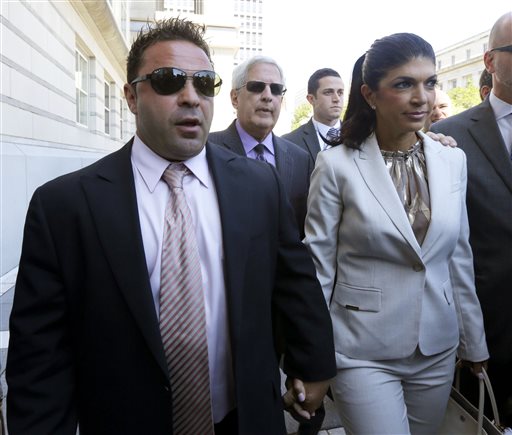By ANTHONY McCARTNEY
AP Entertainment Writer
LOS ANGELES
They invite camera crews into their homes in the hopes of high ratings, endorsement deals and a taste of fame. Yet for some reality television stars, their notoriety brings some unexpected grief from tax collectors or pricey court cases.
That’s the predicament Oscar-nominated actor Ryan O’Neal found himself in, spending several weeks in a Los Angeles courtroom as he defended himself against allegations that he didn’t own one of his most cherished possessions: an Andy Warhol portrait of longtime lover Farrah Fawcett.
Some of the evidence used against him was footage shot by a reality TV crew for her series “Chasing Farrah,” and other projects where O’Neal and Fawcett allowed cameras into their private lives.
The portrait is his, a jury said Thursday. But even he had to question aloud one day toward the end of the trial how much it was all costing him. (His attorney says a lot).
With families such as the Kardashians and those on the “Real Housewives” shows opening up their homes in cities across the country, lawyers to the stars see reality television crews as a weapon that can be used against their clients.
O’Neal’s troubles began when a disgruntled producer of Fawcett’s show convinced her alma mater, the University of Texas at Austin, that the Warhol portrait didn’t belong to the actor. But TV footage _ even just a few fleeting frames _ can also be used by tax collectors, bankruptcy trustees and others to wreak havoc, said Bradford Cohen, an attorney who specializes in celebrity tax and estate issues at Venable LLP.
When federal officials indicted Teresa and Joe Giudice, stars of Bravo’s reality series “The Real Housewives of New Jersey,” they noted the couple’s salary from the network and accused them of hiding assets in a bankruptcy filing after the show’s first season aired. Most of the charges related to loan applications the couple submitted before the show.
Cohen and other lawyers see the footage of what the University of Texas lawyers saw in “Chasing Farrah”_ as evidence.
But veteran reality television producer Jason Carbone said the benefits outweigh any potential risks.
Carbone said whether to show off what’s in someone’s home is just one of many considerations that go into planning a reality series. He said he’s worked in homes where some areas are off limits, or he suggests valuables get moved so they aren’t damaged.
As for attorneys who tell their clients not to do reality TV, Carbone said, “I would say get rid of your attorneys.”
Reality TV is a genre where both up-and-coming stars and A-listers have seen success, Carbone said. In the right hands, “They should conceivably make your life better by the time your show is over.”
While audiences love the shows, courts have to deal with the footage on a case-by-case basis. In O’Neal’s trial, a judge initially blocked university lawyers from playing the sound on a video clip in which Fawcett said she was considering selling one of two Warhol portraits of her. After other evidence about Fawcett’s comments to friends was introduced, the jury did hear the actress’ remarks.
O’Neal’s attorneys also used footage from Fawcett’s show in their case, playing scenes in which the actress and O’Neal danced and kissed. The footage challenged the contention that the pair weren’t close in the early 2000s.
Reality shows aren’t the only media projects lawyers can scour for information. Documentaries, photo shoots and memoirs are other visual sources and increasingly only a click away.
The University of Texas’ lawyers also used passages from O’Neal’s 2012 memoir “Both of Us” and photos from a Vanity Fair magazine piece that showed Warhol artwork in Fawcett’s condominium.
___
Anthony McCartney can be reached at http://twitter.com/mccartneyAP

COMMENTS
Please let us know if you're having issues with commenting.